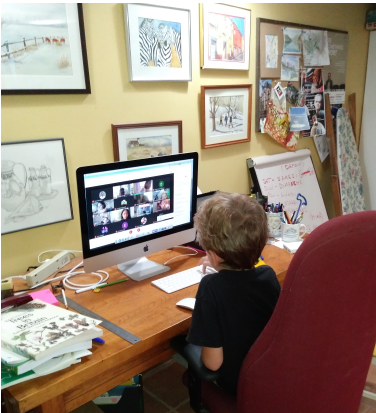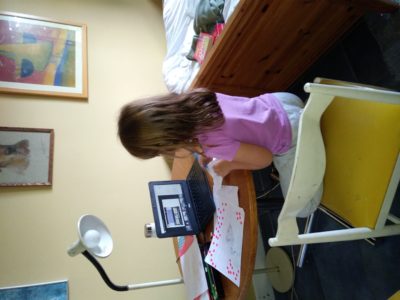 By Ray Rivers
By Ray Rivers
September 18th, 2020
MOUNTSBERG, ON
These are scary times especially if you are grandparents. When it comes to educating our youth, no one should doubt that school boards, teachers and maintenance staff are doing the best they can in the circumstances. But then nobody can say the schools are as safe as they could be – or used to be before the pandemic hit us. The circumstances have changed.
Seven months have passed since the schools were shut down as part of the provincial COVID-19 lock-down. The Premier warned us that this was not going away, that we’d have to change how we do things if we are to avoid getting infected. So what about the children? Aside from some widening of the aisles between students’ desks very little seems to have changed.
Yes, there are the masks and the single cohorts and the managed crowd control, coming and going. But the students, for the most part, are still captive and crowded within their inadequately ventilated classroom environment for most of their day – another petrie dish for the virus and another opportunity for viral transmission.

Leo taking part in a class exercise
So when my wife and I had heard that school would be returning pretty much business-as-usual, we reached out to the parents of our youngest grandchildren and offered to help with their children’s grade 2 and 4 French immersion schooling. There are in excess of 20,000 children who receive homeschooling every year in Ontario, so we’d be in good company, we thought.
Fortunately the education ministry had announced that parents could opt out of sending their children back to the classroom and engage in their program of online or distance learning instead. Students would pretty much get their regular course load but learn at home rather than trucking off to school. The Halton Board sent out requests to parents asking them to opt for the option of their choice.
Teachers, apparently some also teaching regular classes, would appear online through the application of Google online conferencing tools, mainly Google Meet and Google Classroom. Teachers use various media to assist in their online teaching and students are even invited to submit contributions, such as, photos.
There are three teaching blocks of 100 minutes each covering the 8:45 am to 3:05 pm day, and duplicating the essence of what would be learned in a regular classroom. Students may even be given homework assignments. And the online platform allows students to see their teacher as well a number of fellow students, making the experience feel a little less remote.
When we undertook to invite the children to our house we expected that we would be heavily involved in preparing classes. Both of us do have some pedagogical training. As it turns out our role is little more than supervision and coaching as the teachers do the heavy lifting of bringing the curriculum to life on the small screen.
How is it going? Well there was some minor stumbling at the beginning, something one should expect with the introduction of this new way of conducting regular classroom instruction. But the students appear to be excited about what they are doing. And the teachers, in our experience, have been wonderful, clearly competent, enthusiastic and responsive to the needs of the students and their coaches.
While being able to conduct regular classes online sounds pretty amazing, the truth is the technology is still not as user friendly as it could be. But the biggest problem is the size of the online classes. There are close to thirty students in each of the children’s classes.

Bea doing math.
It is impossible to practically see all of one’s classmates on a computer screen. And so it is a difficult for the teacher to stay on top of what everyone is doing. And that makes it a huge challenge for effective immersion language training, for example.
Going through the roster of students can take an inordinate amount of time and that can be really boring to those waiting their turn. Students can lose interest and drift off, even with the best of teachers. And that is the big fear – that students will lose interest, shut down, and their performance will reflect that failing.
This is the same problem one sees in over overcrowded regular classrooms only magnified by the remote learning complication. The solution is obvious – hire more teachers for distance learning. In a country where the unemployment rate is currently above 10% and governments are spilling money like rain water, you’d think this was more than possible.
Of course teachers need some training and a program to follow but this is not rocket science – unless they actually are teaching rocket science. And of course experience counts. But our children are the future, why wouldn’t we want to invest more in their education?
 Ray Rivers usually writes about politics and the environment. His grandchildren are doing elementary school as distant learners.
Ray Rivers usually writes about politics and the environment. His grandchildren are doing elementary school as distant learners.















During about 30 years of federal service I had countless on-line courses. Depending on the subject matter, some were okay but most were rather two dimensional. I took these before the two way visuals of the instructor/student, so it was usually just a timed page with timed question/answer and on to the next page. Rarely were there opportunities to discover how or why I had chosen an incorrect answer.
As a college social science instructor for 22 years I did only in-class teaching. In later years I was asked several times if I would do on-line classes and refused each time for the reasons described above. Perhaps I could have done that were I teaching math, but not a human based subject. And, honestly, transposing lectures and discussions onto a two dimensional format and keeping it meaningful would have amplified my workload beyond imagination.
Overall, I can’t escape the feeling that students participating predominantly in on-line education will come to feel the exercise is little more than a hit-or-miss way to “get the paper” or the “certification”. And, I freely admit to the ethic that education is an art form as well as a science.
Keep on truckin’, Ray and Jean. I admire and respect what you are doing.